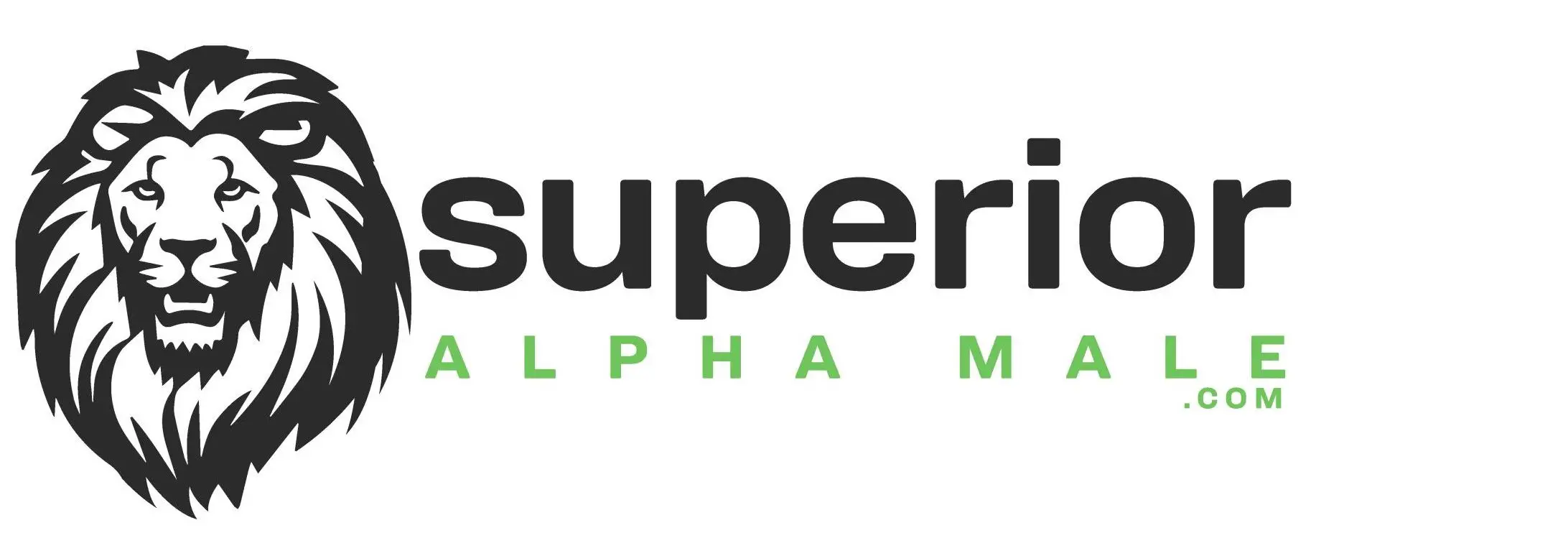Ad Blocker Detected
Our website is made possible by displaying online advertisements to our visitors. Please consider supporting us by disabling your ad blocker.
If you’re an advanced lifter looking to boost your muscle strength, there are several strategies you can implement. These tips are not for beginners or intermediate lifters, but rather for those who are already very strong and near their maximum genetic potential. By incorporating these strategies into your training program, you can continue making gains in strength and achieve your muscle building goals.
One of the key tips is to use small weight plates for microloading. Most commercial gyms only have weight plates with increments of 2.5 lbs, which means the smallest increase you can make is 5 lbs. For advanced lifters using heavier dumbbells, this can be a significant jump that overwhelms the muscles. Investing in small weight plates ranging from 0.5 lbs to 1.25 lbs allows for smaller increments in loading, enabling more precise progression and avoiding plateaus in strength training.
Another important strategy is to analyze your technique. When you reach a certain level of strength, simply adding more weight may not lead to further progress. By ensuring proper form and alignment, you can drive force through the correct areas of the body, preventing injuries and optimizing muscle recruitment. Videotaping yourself from different angles and seeking guidance from experts can help identify any areas of improvement in your technique, allowing you to lift more weight and enhance muscle strength.
To further accelerate your progress, consider training with stronger people. Surrounding yourself with individuals who are stronger than you can push you to new limits and unlock your full potential. Their strength and mindset will inspire you to push past your current limitations and make continuous strength gains. If training with stronger people at your current gym is not possible, consider traveling to a top facility or joining a different gym where you can train with elite athletes.
To build overall muscle strength, it’s important to target your weakest links. Identifying and addressing your weak points is essential for balanced development. By incorporating specific accessory exercises into your training program, you can target these weak points and improve your overall strength. Prioritizing accessory exercises such as pin squats or pause squats can help you overcome limitations and achieve a more balanced and stronger physique.
Additionally, incorporating speed and power exercises into your routine can enhance muscle strength. Power exercises, like Olympic lifts and their variations, target specific muscle fibers and improve explosiveness, which translates to better performance in main lifts. By stimulating more muscle fiber recruitment through explosive movements, you can increase your overall muscle strength.
To promote muscle hypertrophy and support strength gains, it’s beneficial to mix in volume work. While heavy, low-rep sets are effective for building strength, incorporating phases of higher volume work can stimulate muscle growth and adaptation. By increasing the overall training volume for a specific period, you create new physiological demands on your muscles, leading to increased muscle size and improved strength potential.
Prioritizing recovery is crucial for optimal strength development. Adequate rest and recovery allow your body to adapt and grow stronger between training sessions. Getting sufficient sleep, engaging in light aerobic exercise, practicing proper breathing techniques, and following a balanced nutrition plan are all essential components of a comprehensive recovery strategy.
Key Takeaways:
- Use small weight plates for precise microloading.
- Analyze and optimize your technique to maximize muscle strength gains.
- Train with stronger people to push yourself to new limits.
- Target your weakest links with specific accessory exercises.
- Incorporate speed and power exercises for enhanced muscle strength.
- Mix in volume work to promote muscle hypertrophy.
- Prioritize recovery for optimal strength development.
Microload for Better Progress
One way to continue making progress in muscle strength is by microloading. Most commercial gyms only have weight plates with increments of 2.5 lbs, which means the smallest increase you can make is 5 lbs. For advanced lifters using heavier dumbbells, this can be a significant jump that overwhelms the muscles.
Investing in small weight plates ranging from 0.5 lbs to 1.25 lbs allows for smaller increments in loading, enabling more precise progression and avoiding plateaus in strength training.

Microloading is particularly beneficial for advanced lifters who are already at their maximum genetic potential. By utilizing smaller weight plates, you can gradually increase the load without putting excessive strain on your muscles. This gradual progression helps to stimulate muscle growth and adaptation over time.
By incorporating microloading techniques into your training program, you can ensure a steady progression in muscle strength without overwhelming your body. It allows you to make small, manageable increments in weight, effectively challenging your muscles and encouraging continued growth.
Furthermore, microloading can be especially useful for exercises where smaller weight increments are necessary, such as dumbbell lifts or isolation exercises. It allows you to fine-tune the resistance and target specific muscle groups more effectively.
Remember, consistency is key when it comes to microloading. Be patient and gradually increase the load as you become stronger. This approach will help you break through plateaus and continue making progress in your muscle strength journey.
Benefits of Microloading:
- Allows for smaller increments in loading
- Promotes precise muscle strength progression
- Avoids plateaus in strength training
- Enables gradual adaptation and muscle growth
- Effective for advanced lifters at their maximum genetic potential
- Provides targeted resistance for specific muscle groups
Tips for Microloading:
- Invest in small weight plates ranging from 0.5 lbs to 1.25 lbs
- Gradually increase the load with small increments
- Focus on proper form and technique
- Monitor your progress and adjust the load accordingly
- Combine microloading with other progressive overload strategies
By incorporating microloading into your strength training routine, you can optimize your progress and achieve new levels of muscle strength. Remember to always listen to your body, prioritize proper form, and gradually challenge yourself to reach new heights.
Optimize Your Technique
Analyzing and optimizing your technique is crucial for maximizing muscle strength gains. When you reach a certain level of strength, simply adding more weight may not lead to further progress. By ensuring proper form and alignment, you can drive force through the correct areas of the body, preventing injuries and optimizing muscle recruitment.
Videotaping yourself from different angles and seeking guidance from experts can help identify any areas of improvement in your technique, allowing you to lift more weight and enhance muscle strength.
Proper technique is the foundation for muscle strength improvement. It ensures that you are effectively targeting the right muscles and exerting force in the most efficient way possible. Don’t underestimate the power of correct form in your journey to build muscle strength.
By focusing on technique, you can avoid common pitfalls that hinder progress. Improper alignment or compensation patterns can put unnecessary stress on joints and limit the effectiveness of your exercises. By addressing these issues, you lay the groundwork for further strength gains and reduce the risk of injury.
Here are some tips to help you optimize your technique:
- Analyze your technique: Observe yourself performing the exercises or ask someone knowledgeable to provide feedback. Pay attention to body posture, joint angles, and range of motion to identify areas that need improvement.
- Correct form: Once you identify areas for improvement, focus on correcting them. This may involve adjusting your posture, modifying your grip, or making changes to your movement patterns.
- Seek guidance: Consider working with a personal trainer or coach who can provide expert guidance. They can offer personalized feedback, suggest modifications, and provide targeted exercises to address your specific technique issues.
- Record yourself: Use your smartphone or a camera to videotape your workouts. Review the footage later, analyzing your form from different angles. This visual feedback can help you spot areas where your technique can be refined.
Remember, optimizing your technique is an ongoing process. As you continue to progress in your strength training journey, regularly reassess your form and make adjustments as needed.
By prioritizing proper technique, you can unlock your full potential for muscle strength improvement and achieve your fitness goals.
Video Tutorial: Improving Squat Technique

Watch this helpful video tutorial on how to improve your squat technique:
Video Link: Improve Your Squat Technique
Train with Stronger People
Surrounding yourself with training partners who are stronger than you can have a profound impact on your strength training progress and muscle strength development. When you’re the strongest person at your gym, it can be easy to fall into a comfort zone and stop pushing yourself to new limits. By training with individuals who are stronger, you expose yourself to a higher level of intensity and challenge, allowing you to unlock your full potential and continue making continuous strength gains.
Training with stronger people provides several benefits. First, their strength serves as a source of inspiration and motivation. Witnessing their ability to lift heavier weights and overcome physical obstacles can ignite a fire within you to push past your current limitations and strive for greatness. Their mindset and determination can help you cultivate a stronger mental fortitude, enabling you to tackle difficult lifts with confidence and perseverance.
Furthermore, training with stronger individuals allows you to learn from their techniques and strategies. You can observe and analyze their movements, form, and execution during exercises, gaining valuable insights that can positively impact your own performance. By studying their approaches, you can refine your own technique, optimize your muscle recruitment, and enhance your overall strength output.
If training with stronger people at your current gym is not possible, consider exploring other options. Look for top facilities or fitness centers known for housing elite athletes. Joining a different gym that attracts experienced lifters can give you the opportunity to connect with like-minded individuals who are dedicated to pushing their physical limits. By immersing yourself in a community of strong individuals, you can tap into a supportive and competitive environment that fuels your progress.
Remember, success breeds success. Surrounding yourself with training partners who are stronger than you not only pushes you to become a better version of yourself but also creates an environment where strength flourishes. Embrace the challenge, seek out opportunities to train with stronger individuals, and watch your muscle strength skyrocket.

Target Your Weakest Links
Identifying and addressing your weakest links is essential for building overall muscle strength. If you struggle with certain aspects of exercises like squatting, bench pressing, or deadlifting, there are specific accessory exercises you can incorporate into your training program to target those weak points. For example, if you struggle with exploding from the bottom of a squat, pin squats or pause squats can help improve your strength in that range of motion. By prioritizing accessory exercises, you can correct limitations and achieve a more balanced and stronger physique.
Addressing Weak Points
Addressing your weak points involves identifying imbalances and dedicating focused attention to strengthen those areas. It’s important to analyze your performance in key exercises and pinpoint specific movements or ranges of motion where you struggle. By incorporating targeted exercises that isolate and challenge these weak points, you can build the necessary strength and stability to overcome them.
“Incorporating accessory exercises into your training program can be the missing piece to unlock your true strength potential. By targeting your weakest links, you can achieve a more balanced physique and enhance overall muscle strength.” – Fitness expert, James Thompson
Specific Exercises for Weak Points
To effectively address weak points, it’s crucial to choose exercises that target the specific muscle imbalances or movement deficiencies you’re experiencing. Here are some examples of exercises that can help strengthen common weak points:
- Quad weakness: Bulgarian split squats, step-ups
- Hamstring weakness: Romanian deadlifts, glute bridges
- Shoulder weakness: Push-ups, overhead press variations
- Core weakness: Planks, Russian twists
By incorporating these exercises into your training routine and progressively increasing the intensity and load, you can address your weak points and develop a more well-rounded physique with improved muscle strength.
Balance and Symmetry
In addition to addressing weak points, it’s important to strive for balance and symmetry in your training. This involves targeting both agonist and antagonist muscle groups, ensuring that one muscle group is not significantly stronger or weaker than its opposing counterpart. By incorporating exercises that promote balance and symmetry, such as single-leg exercises or unilateral movements, you can further enhance muscle strength and reduce the risk of injury.
Remember: Building muscle strength is a journey that requires consistent effort and targeted training. By targeting your weakest links and focusing on exercises that address muscle imbalances, you can achieve a more balanced and stronger physique.
Incorporate Speed and Power Exercises
As an advanced lifter, it’s essential to incorporate speed and power exercises into your routine to maximize your muscle strength. Power exercises, such as Olympic lifts and their variations, are highly effective for targeting specific muscle fibers and improving explosiveness. These explosive movements not only enhance your overall muscle strength but also translate to better performance in your main lifts.
When you perform power exercises, you engage your fast-twitch muscle fibers, which are responsible for generating force and power. By incorporating these exercises into your training program, you stimulate greater muscle fiber recruitment, leading to increased muscle strength.
One effective way to enhance force production during exercises like bench presses and back squats is by using tools like chains and bands. These resistance-enhancing tools provide variable resistance throughout the range of motion, challenging your muscles even more and promoting greater muscle fiber activation.
A great example of a power exercise is the snatch, which targets multiple muscle groups and requires explosive hip, knee, and ankle extension. Another effective exercise is the clean and jerk, which also involves multiple muscle groups and demands explosive power.
Benefits of Incorporating Speed and Power Exercises:
- Improved muscle fiber recruitment
- Enhanced explosiveness and power
- Increased muscle strength
- Better performance in main lifts
To help you visualize the benefits of incorporating speed and power exercises, take a look at the following table:
| Exercise | Main Muscles Worked | Explosiveness | Muscle Fiber Recruitment |
|---|---|---|---|
| Snatch | Quadriceps, Hamstrings, Glutes, Shoulders, Back | High | High |
| Clean and Jerk | Quadriceps, Hamstrings, Glutes, Calves, Shoulders, Back | High | High |
Incorporating speed and power exercises into your routine is a game-changer for advanced lifters like yourself. These exercises not only improve explosiveness and power but also target specific muscle fibers, leading to increased muscle strength. By challenging your muscles with these explosive movements, you’ll continue to make progress towards your strength goals.
To illustrate the explosive nature of power exercises, here’s an image of an athlete performing the snatch:

Mix In Volume Work
When it comes to enhancing muscle strength, incorporating volume work into your training program can be highly beneficial. While heavy, low-rep sets are effective for building strength, adding phases of higher volume work can stimulate muscle growth and adaptation. By increasing the overall training volume for a specific period, you create new physiological demands on your muscles, leading to increased muscle size and improved strength potential.
High volume training involves performing more sets and repetitions with a moderate weight compared to traditional strength training. This approach promotes muscle hypertrophy and can support your strength gains. By challenging your muscles with a higher workload, you stimulate them to grow and adapt, helping you build overall strength.
During high volume training, incorporate exercises that target multiple muscle groups to maximize the stimulus on your muscles. Compound exercises like squats, deadlifts, bench presses, and rows are excellent choices. Aim for a moderate weight that allows you to complete 8 to 12 reps per set. This rep range is ideal for promoting muscle hypertrophy while still challenging your strength.
Remember that the key to successful high volume training is progressive overload. Gradually increase the weight, sets, or reps as your muscles adapt and get stronger. Keep track of your progress and push yourself to do better each workout.
The Benefits of High-Volume Training:
- Stimulates muscle hypertrophy
- Enhances muscle endurance
- Promotes metabolic adaptations
- Increases overall training intensity
By incorporating volume work into your training program, you can take your muscle strength to new heights. The increased workload and muscle stimulation provided by high volume training can lead to significant gains in both muscle size and overall strength.
After completing a phase of high volume training, it’s essential to incorporate recovery periods into your program. This allows your muscles to adapt and grow stronger. Listen to your body and prioritize rest and recovery alongside your intense training sessions.

Prioritize Recovery for Optimal Strength
Prioritizing recovery is crucial for optimal strength development. Adequate rest and recovery allow your body to adapt and grow stronger between training sessions. Getting sufficient sleep, around seven hours per night, helps with muscle repair and growth. Incorporating restorative practices such as foam rolling and light mobility work can keep your body fresh and reduce muscle soreness. Additionally, engaging in light aerobic exercise and practicing proper breathing techniques can promote relaxation and enhance recovery. A balanced nutrition plan that includes adequate protein, colorful veggies, good fats, whole grains, and hydration supports muscle building and repair, ultimately boosting muscle strength.
To ensure you’re giving your body the rest and recovery it needs, aim for seven to eight hours of sleep each night. Sleep is essential for muscle repair and growth, as well as overall recovery. Adequate rest allows your body to recharge and prepares you for your next workout session. So make sleep a priority and create a sleep routine that supports your strength training goals.
Aside from the physical aspects of recovery, incorporating restorative practices into your routine can help speed up the recovery process. Foam rolling and light mobility work can help alleviate muscle soreness and improve flexibility, allowing you to train at your best. Make it a habit to include these practices before and after your workouts to keep your body fresh and ready for the next session.
In addition to rest and recovery techniques, engaging in light aerobic exercise can boost your recovery process. Activities such as swimming, cycling, or walking can promote blood flow and oxygen delivery to your muscles, aiding in their recovery. Aim for 15-30 minutes of light aerobic exercise on your rest days to support your overall recovery.
Don’t underestimate the power of proper nutrition in muscle recovery and strength development. Adopting a balanced nutrition plan that includes adequate protein, colorful veggies, good fats, whole grains, and hydration can fuel your muscles, promote tissue repair, and optimize muscle strength progress. Make sure to consume enough protein to support muscle recovery and growth. Include lean sources of protein such as chicken, turkey, fish, tofu, or legumes in your meals. Pair protein with complex carbs like whole grains and colorful veggies to provide your body with the necessary nutrients for recovery and growth. Incorporate healthy fats such as avocados, nuts, and olive oil to support hormonal balance and reduce inflammation.
Remember to hydrate adequately throughout the day, as water plays a vital role in muscle function and recovery. Aim for at least eight glasses of water per day, and consider adding electrolyte-rich beverages to your routine, especially if you’re engaging in intense workouts or training sessions.

By prioritizing rest, incorporating restorative practices, engaging in light aerobic exercise, and maintaining a balanced nutrition plan, you can optimize your muscle recovery and enhance muscle strength progress. Give your body the care it needs, both inside and outside the gym, and watch your strength levels soar.
Conclusion
To achieve your muscle strength goals, it’s essential to implement a combination of strategies that encompass progressive overload, proper technique, targeted accessory exercises, power and speed training, volume work, and prioritized recovery. By consistently challenging yourself, focusing on proper form and recovery, and fueling your body with essential nutrients, you can make continued progress as an advanced lifter.
Building muscle strength is a journey that requires dedication and perseverance. It’s important to remember that results won’t come overnight, but the effort you put in is worth it. By incorporating these tips into your training routine, you can unleash your full muscle strength potential and achieve the strong, powerful physique you desire.
Start implementing these strategies today and stay committed to your goals. As you continue on this path, you’ll notice improvements in your muscle strength, performance, and overall fitness level. Embrace the challenges, stay consistent, and push yourself beyond your limits. With the right mindset and these proven strategies, you can reach new heights in your strength training journey.
FAQ
How can I boost my muscle strength as an advanced lifter?
As an advanced lifter, there are several strategies you can implement to boost your muscle strength. Some tips include microloading with small weight plates, analyzing and optimizing your technique, training with stronger people, addressing your weakest links through accessory exercises, incorporating speed and power exercises, adding volume work to your training program, prioritizing recovery, focusing on proper breathing techniques, and enhancing your nutrition.
What is microloading and how does it help with muscle strength progression?
Microloading involves using small weight plates ranging from 0.5 lbs to 1.25 lbs to make smaller increments in loading during your strength training. This allows for more precise progression and avoids plateaus. Most commercial gyms only have weight plates with increments of 2.5 lbs, which can be a significant jump for advanced lifters. Investing in small weight plates enables you to continue making progress in muscle strength without overwhelming your muscles.
How can I optimize my technique to maximize muscle strength gains?
Analyzing and optimizing your technique is crucial for maximizing muscle strength gains. Ensuring proper form and alignment allows you to drive force through the correct areas of your body, preventing injuries and optimizing muscle recruitment. Videotaping yourself from different angles and seeking guidance from experts can help identify areas of improvement in your technique, enabling you to lift more weight and enhance muscle strength.
How can training with stronger people help with muscle strength development?
Surrounding yourself with stronger training partners can significantly impact your own strength development. By training with individuals who are stronger than you, you can push yourself to new limits and unlock your full potential. Their strength and mindset will inspire you to push past your current limitations and make continuous strength gains. Consider finding training partners at your gym or joining a different facility where you can train with elite athletes.
What can I do to target my weakest links and build overall muscle strength?
To build overall muscle strength, it’s important to identify and address your weakest links. If you struggle with certain aspects of exercises like squatting, bench pressing, or deadlifting, you can incorporate specific accessory exercises into your training program to target those weak points. For example, if you struggle with the bottom portion of a squat, you can include pin squats or pause squats to improve strength in that range of motion. Prioritizing accessory exercises helps correct muscle imbalances and leads to a more balanced and stronger physique.
How can speed and power exercises enhance muscle strength?
Incorporating speed and power exercises into your routine can help enhance muscle strength. Power exercises like Olympic lifts and their variations target specific muscle fibers and improve explosiveness, which translates to better performance in main lifts. Using tools like chains and bands can also enhance force production during exercises like bench presses and back squats. By including these exercises, you stimulate more muscle fiber recruitment and increase your overall muscle strength.
How does volume work contribute to muscle strength gains?
Adding volume work to your training program promotes muscle hypertrophy and supports strength gains. While heavy, low-rep sets are effective for building strength, incorporating phases of higher volume work stimulates muscle growth and adaptation. By increasing the overall training volume for a specific period, you create new physiological demands on your muscles, leading to increased muscle size and improved strength potential. After a phase of high volume training, it’s essential to incorporate recovery periods to allow for adaptation and further strength gains.
How does prioritizing recovery contribute to optimal strength development?
Prioritizing recovery is crucial for optimal strength development. Adequate rest and recovery allow your body to adapt and grow stronger between training sessions. Getting sufficient sleep, around seven hours per night, helps with muscle repair and growth. Engaging in restorative practices like foam rolling and light mobility work can keep your body fresh and reduce muscle soreness. Additionally, incorporating light aerobic exercise and practicing proper breathing techniques promotes relaxation and enhances recovery. A balanced nutrition plan with adequate protein, colorful veggies, good fats, whole grains, and hydration supports muscle building and repair, ultimately boosting muscle strength.
How Can I Use Protein Synthesis to Boost Muscle Strength?
To enhance muscle strength, remember these key tips for muscle protein synthesis. Consuming high-quality protein, such as eggs, chicken, or tofu, after a workout is essential. Additionally, engaging in resistance training exercises can stimulate protein synthesis and promote muscle growth. Finally, ensuring adequate rest and sleep is crucial for optimal muscle recovery and synthesis.


